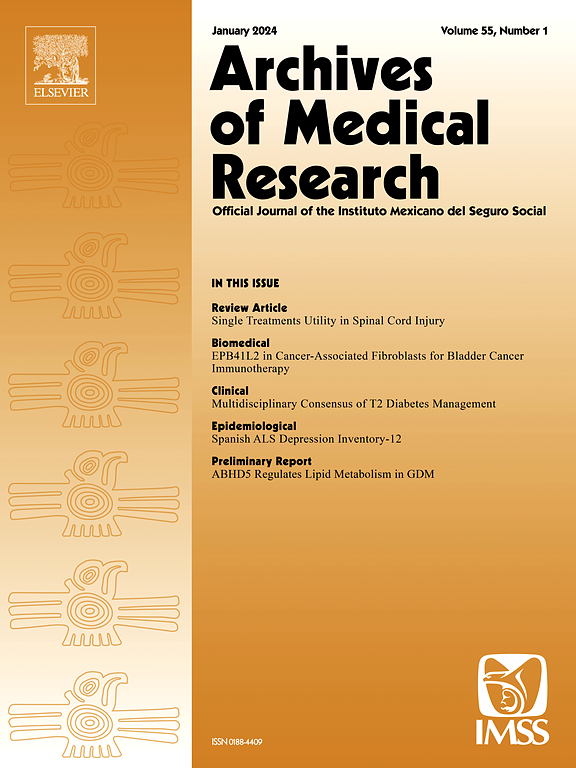按级别和覆盖范围划分的绕过医疗来源:后流行病时代秘鲁和乌拉圭的基本服务获取情况。
IF 4.7
3区 医学
Q1 MEDICINE, RESEARCH & EXPERIMENTAL
引用次数: 0
摘要
背景和目的:拉丁美洲为不同社会群体提供的医疗保健服务造成了不平等。个人会主动选择绕过他们的医保和预定的医疗机构。大流行后,我们试图描述绕过行为的特点,并量化其对获得基本服务的影响:方法:我们对秘鲁和乌拉圭人口电话调查的横截面数据进行了分析。调查对象通过随机数字拨号选出。结果被定义为获得预防性筛查和满足新出现的健康需求。按级别划分的绕过是指参与者绕过初级保健机构进行通常的保健或最后一次预防性就诊;按覆盖范围划分的绕过是指在公共覆盖范围或社会保障范围之外就诊。研究还包括社会人口学特征,并计算了调整后的平均治疗效果:分析了秘鲁 1,255 名参与者和乌拉圭 1,237 名参与者的数据。按级别(秘鲁 32%;乌拉圭 60%)和覆盖范围(秘鲁 29%;乌拉圭 21%)划分,绕过行为在特权群体中更为普遍,尤其是在秘鲁。系统能力总体较低,并因绕过方式的不同而不同,尤其是在秘鲁。在调整后的分析中,发现秘鲁的绕过覆盖率(未满足的保健需求相差 8%)和乌拉圭的绕过水平(未满足的需求增加 5%)在统计上有显著差异:结论:两国提供的基本预防服务都不足。在秘鲁,"绕道 "可以作为衡量不公平的替代指标。可以向绕过初级保健者提供预防服务提醒。需要对卫生系统进行深入改革,以确保公平获得基本服务。本文章由计算机程序翻译,如有差异,请以英文原文为准。
Bypassing sources of care by level and coverage: Access to essential services in Peru and Uruguay in the post-pandemic era
Background and aims
Healthcare provision to distinct social groups in Latin America contributes to inequities. Individuals make active choices by bypassing their coverage and intended healthcare source. After the pandemic, we sought to characterize bypassing behaviors and quantify their effects on access to essential services.
Methods
Cross-sectional data from a population-based telephone survey in Peru and Uruguay were analyzed. Participants were selected by random digit dialing. Outcomes were defined as access to preventive screenings and satisfaction of emerging health needs. Bypassing by level was defined as when participants went around primary care for the usual source of care or last preventive visit; bypassing by coverage when care was sought outside of public coverage or social security. Sociodemographic characteristics were included, and the adjusted average treatment effect was calculated.
Results
Data from 1,255 participants in Peru and 1,237 participants in Uruguay were analyzed. Bypassing behaviors by level (32% Peru; 60% Uruguay) and coverage (29% Peru; 21% Uruguay) were more prevalent in more privileged groups, especially in Peru. System competence was low overall and varied by bypassing mode, especially in Peru. In the adjusted analysis, statistically significant differences were found in bypassing by coverage in Peru (–8% difference in unmet health needs) and by level in Uruguay (5% more unmet needs).
Conclusion
Provision of essential preventive services was insufficient in both countries. In Peru, bypassing could serve as a proxy measure of inequities. Reminders of preventive services could be offered to bypassers of primary care. Profound health system reforms are needed to ensure equitable access to essential services.
求助全文
通过发布文献求助,成功后即可免费获取论文全文。
去求助
来源期刊

Archives of Medical Research
医学-医学:研究与实验
CiteScore
12.50
自引率
0.00%
发文量
84
审稿时长
28 days
期刊介绍:
Archives of Medical Research serves as a platform for publishing original peer-reviewed medical research, aiming to bridge gaps created by medical specialization. The journal covers three main categories - biomedical, clinical, and epidemiological contributions, along with review articles and preliminary communications. With an international scope, it presents the study of diseases from diverse perspectives, offering the medical community original investigations ranging from molecular biology to clinical epidemiology in a single publication.
 求助内容:
求助内容: 应助结果提醒方式:
应助结果提醒方式:


